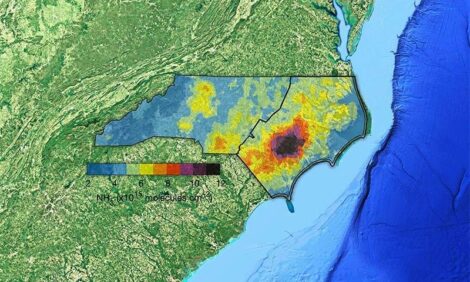



United Kingdom Pig Meat Market Update - January 2011
James Park, senior economic analyst with AHDB Meat Services Economic and Policy Analysis Group, explains the latest trends in the UK and EU. The decline in prices continued in the UK during November but levelled off in December. The EU average pig reference price in November was three per cent higher than the same month of 2009 and cold weather since has helped to firm producer prices.UK Prices
The downward trend in the DAPP continued through November with the monthly average at 136.69p per kg, down two per cent on the same month last year and over 10 pence lower than the peak in June. The DAPP decline stopped in December following some support within the supply chain and ended the year 137p per kg, one penny per kilo lower than where it began.
Average carcass weights in the DAPP sample fell in November down to 79.9kg following the usual seasonal decline. Carcass weights for November were down one per cent on the same month last year. The average probe measurement in November was 11.5mm, unchanged on the month but up one per cent on the previous year, indicating that lighter but less lean pigs were being produced. Since June last year, the probe values have been exceeding year earlier measurements more frequently, largely as a result of good growing conditions in the summer. In December, carcass weights have continued to seasonally decrease although probe measurements improved at the same time.

The severe cold weather conditions in December may have an impact on future supplies due to slower growth rates and higher mortality. However, the industry was very resilient to the cold snap in January 2010 where carcass weights were not hugely affected and producers maintained a good level of physical performance. However, additional costs were incurred as a result of increased labour getting fresh water to the pigs.
The weakening finished trade was reflected in a declining spot price for 30-kg weaners. The market weakened substantially since May as prices have reacted more rapidly than the DAPP to the rise in feed prices. In November 2010 the weaner price was below £43 per head, 12 per cent down on the previous year and two per cent below prices of the same month in 2008. During December, prices remained lower than the average weaner value in 2008. Weaner prices reduced due to downward pressure from finisher units as they attempt to offset rising feed costs.
UK sow prices continue to fall due to higher levels of culling in Germany reducing the need for imported sow meat and in addition weather conditions have compounded this issue. A significant proportion of sow meat in Germany was put into cold storage in December.
European sow prices had increased since September but reduced in early December as a result of a weakened demand. Prices for weaners in the EU increased by four per cent in November although they remained some 15 per cent lower than in November 2009. An eight per cent increase in the German piglet price was the main driver behind the recovery although German prices were some 20 per cent lower in November compared with a year earlier.
Exchange Rates and EU Prices

The EU average pig reference price in November was €137 per 100kg, marginally lower than in October but three per cent higher than November 2009. The effect of the cold weather in recent weeks on pig growth and movement has reduced supplies of pig meat in key European markets and helped to firm producer prices. Between October and November, prices in Germany and the Netherlands increased although this was offset by lower prices recorded in Spain and Poland.
Prices in Denmark were unchanged on the previous month. As a result of exchange rate movements, the UK reference price, in euro terms, increased by one per cent in November to €155 per 100kg, 13 per cent higher than the EU average.
The EU Commission held a reflection day on the future of the EU pig meat sector on 3 December in response to the economic issues being faced by the sector. The Commission stated at the event that it was not prepared to increase export subsidies at the current time. The outcome of the latest Agriculture Council meeting suggests that the Agriculture Commissioner is not likely to set up a high level group to deal with this issue. The Commissioner therefore proposes that the main framework for discussing this would be in the Special Committee of Agriculture.
UK Slaughterings and Production
In the UK during November 784,000 pigs were slaughtered at an average of 196,000 per week, an increase of 7,000 per week compared with the October average and 11,000 per week more than in November 2009. More than 600,000 pigs were killed in England and Wales during November, almost five per cent more than in November 2009 and representing over 150,000 per week, three per cent more than the weekly average during October.

Slaughterings in Scotland totalled just below 47,000 head during November, the same as a year earlier, while throughputs in Northern Ireland increased by 15 per cent compared with a year earlier as a result of the continued higher volumes of live imports from the Republic of Ireland.
Slaughterings of clean pigs in the UK totalled 8.5 million head in the first 11 months of the year, 400,000 higher than during the same period in 2009. Over 1.4 million pigs were slaughtered in Northern Ireland during the first 11 months of 2010, 14 per cent more than in 2009 and accounting for 17 per cent of all clean pig slaughterings in the UK. Scottish pig slaughterings at 520,000 head, were five per cent lower than in the corresponding period of 2009. Combined with increased carcass weights during the year, the increased slaughterings has resulted in production inthe first 11 months of the year increasing six per cent year-on-year.
Although sow slaughter statistics continue to be unavailable from Defra. It has been reported that throughputs are up year-on-year as producers remove unproductive sows from the herd. As yet, there has been no evidence of complete herd disposals.
The latest trade data indicated that UK exports of pork in the first 10 months of 2010 were up 26 per cent compared with a year earlier. The value of exports was up 28 per cent on the year at £119 million. Exports to Germany, the Netherlands and Ireland increased by 17 per cent, 40 per cent and 67 per cent, respectively. Demand has strengthened for carcasses and chilled boneless cuts. Despite this strong growth of exports to EU Member States, shipments to non-EU countries fell by five per cent on the year.
UK imports of pork fell by two per cent in the first 10 months of 2010 compared with the previous year. Shipments from Denmark were down 13 per cent but shipments from the Netherlands were up 37 per cent on the previous year. The value of pork imports in January to October was unchanged on the year.
Feed Prices
The festive and New Year period saw little let-up in the global grain markets. Flooding in Australia has driven grain markets further upwards, with UK LIFFE breaking through the £200 per tonne mark. The Australian situation is moving away from harvest woes to logistical problems; flooding has hampered exports from the east coast and the bulk of Aussie exportable surplus is on the east coast and away from the larger export terminals in the west. Tight US maize stocks have given underlying support to feed grain markets, and the next USDA report, released on 12 January, will give more information. The maize market has also been supported by dry conditions in South America during the key yield forming growth stage.

Since 21 December, CBOT wheat has gained $16 per tonne to $296, CBOT maize $7 per tonne to $244 and MATIF wheat gained €12per tonne to €257 by close on Monday 3 January. In the UK, LIFFE wheat has gained £5 per tonne since 21 December, and in early trading on 4 January, the nearby LIFFE wheat contract was up £4.30per tonne from the previous settlement price at £203.30.
Argentine 2011 soybean production is currently seen to fall to as low as 47 million tonnes by Oilworld (click here) following a continuing drought that has affected both planting levels and crop development prospects. This would be a fall of around 7.4million tonnes from the 2009/10 crop and be the lowest level of production since the 2009 harvest. Rainfall levels over the next few weeks will be crucial to crop development. CBOT soyabean nearby values rose to over $512 per tonne on 31 December, the highest since mid-2008, on the Argentine crop news plus Asian rust concerns in the Brazilian crop and continued high import demand from China.
Consumption
In the four-week period ending 28 November, households purchased two per cent more pork than a year ago. Pork frying and grilling steak purchases were up 29 per cent in volume terms as they were heavily promoted. In contrast, pork belly purchases and grilling chop volume purchases were down 30 per cent and 11 per cent, respectively, year-on-year. Belly purchases were sharply down as they were heavily promoted during the same month last year. Both leg and loin roasting joint purchases were up on the previous year as consumers switched to pork from other red meats.
For the latest four-week period, household expenditure on pork was unchanged year-on-year at £68 million.
Bacon sales have continued to grow and in the latest four-week period, they were up eight per cent in volume terms on the previous year. Bacon continued to be heavily promoted during the month. Sausage sales continued to recover in November supported by British Sausage Week and were up six per cent on the previous year.

January 2011







